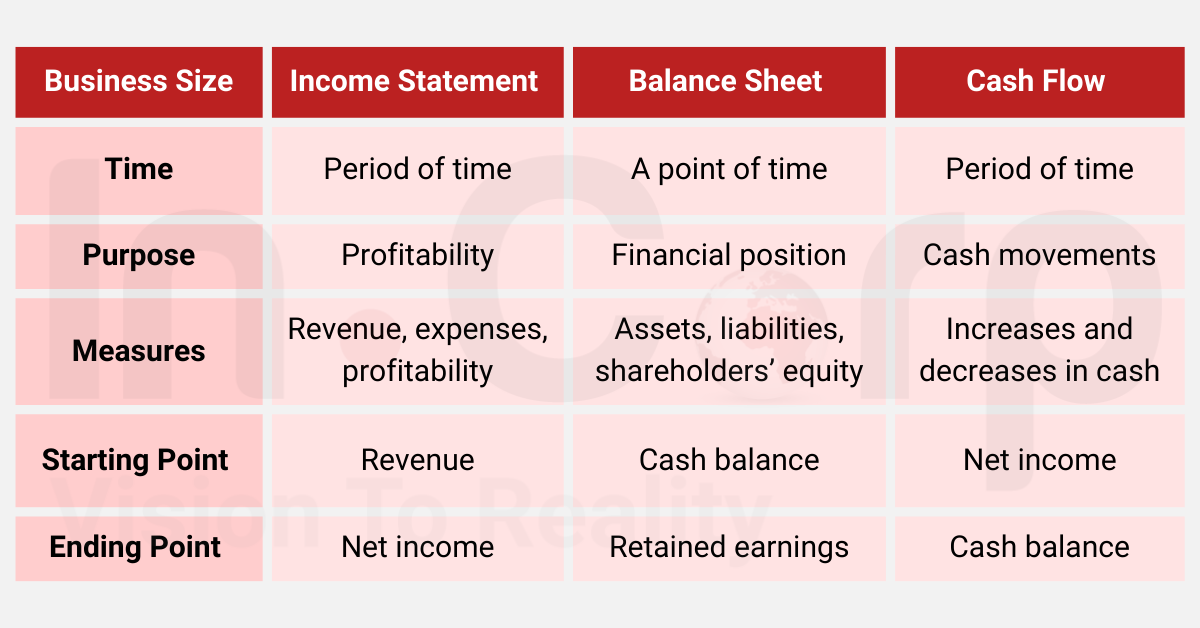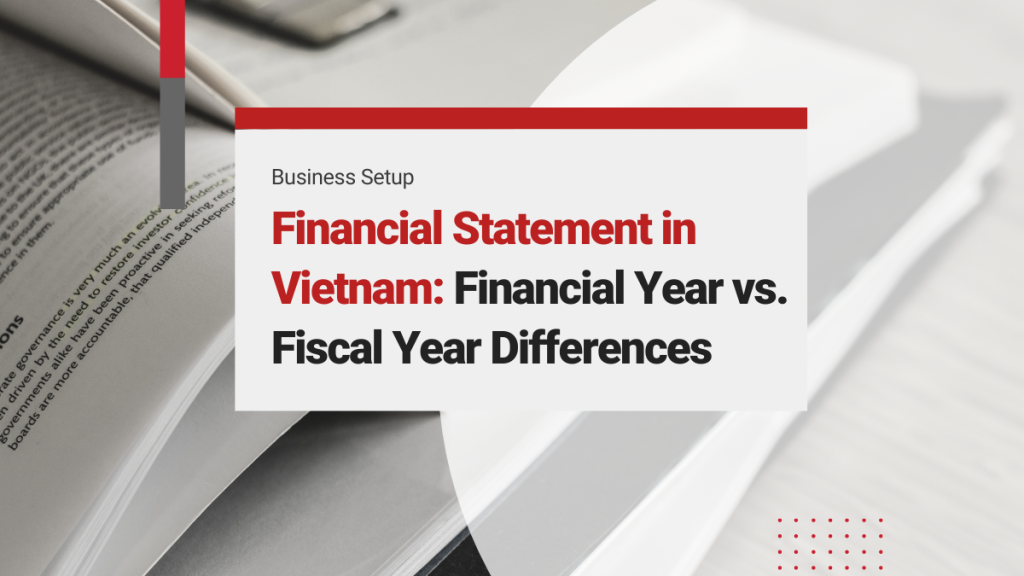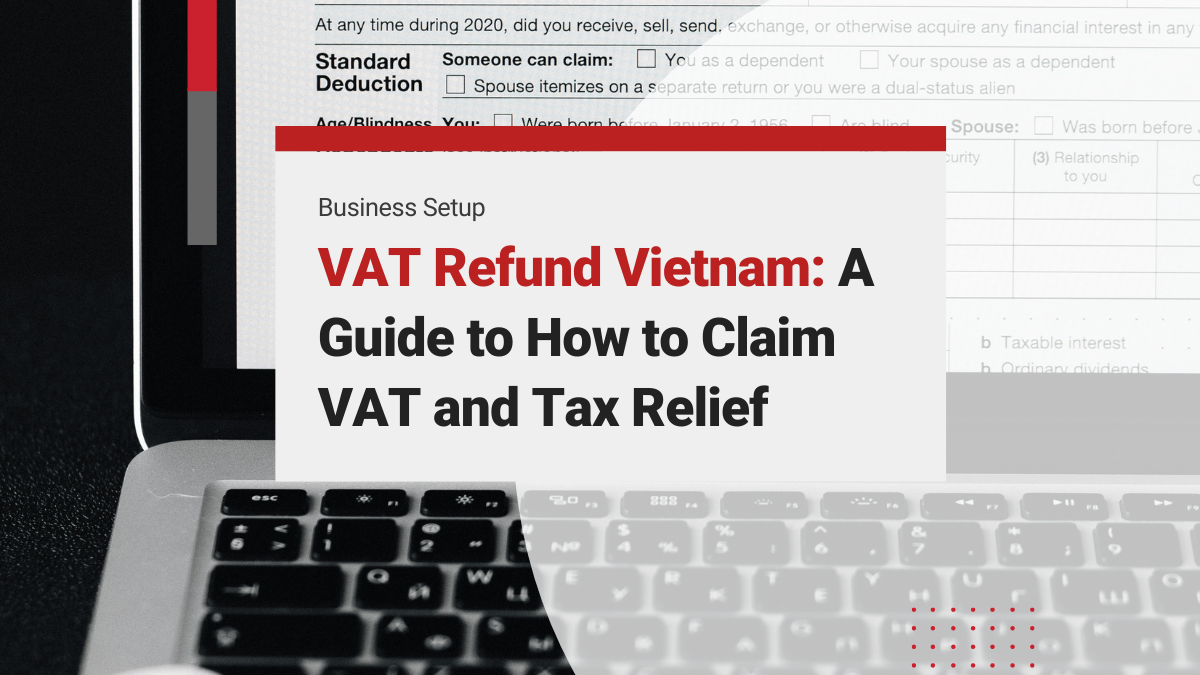To do business in Vietnam, you should comply with some financial requirements including updated financial statements and audit reports. Although the regulatory environment in the country fosters ease of doing business and attracts global investors, it frequently changes. This makes it essential to have the financial statement of your company ready. Given the frequent regulatory updates, many companies review their Vietnam accounting and taxation services early so bookkeeping, statutory financial statements, and audits are structured correctly.
Financial statements are particularly important as they give an idea about the company’s financial position to investors and shareholders. It’s an essential part of a financial report. Through this article, we have tried to inform business owners or companies trying to set up a company in Vietnam, about the necessary compliance requirements.
Definition of a Financial Statement in Vietnam
Audited financial statements are a way to inform investors about your business activities and how the company is faring. It is a measure of the financial health of the enterprise and hence it is audited for investing or tax purposes. This ensures clarity and accuracy regarding the spending and revenues of the business.
Three Major Financial Statements
Before understanding the analysis of such statements we need to know 3 major types of financial statements – balance sheet, income statement and cash flow statement (CFS).
However, these three major types are only applicable to for-profit organizations, non-profits have a different set. Apart from these, some companies also issue financial status change statements, and profit and loss statements.
Sometimes the schedule of the company also becomes a part of a financial statement. But under no circumstances, do they reveal information about management analysis, directors’ reports and financial fact sheets.
Balance Sheet
A balance sheet shows the net worth of the company as it provides a snapshot view of the finances of the enterprise at any given point in time (marked by the financial statement issue date at the top of the document). The balance sheet displays the assets and liabilities of the company, classified according to current and non-current versions and listed as per their liquidity.
The balance sheet starts with cash balance and ends with retained earnings. It is governed by the formula:
Assets = Liabilities + Shareholders Equity
In this kind of financial statement, assets and liabilities plus equity are balanced. This includes balancing assets like cash and other equivalents with the same in the liabilities section. At the end of the statement, the ending balance of the concerned period has to be displayed, showing the proper cash flow. It’s connected to the income statement, as the net income is highlighted in the balance sheet after adjustment for dividends.
However, to know how it works, you need to understand the critical features of assets and liabilities including shareholder’s equity
Assets can include:
- Cash equivalent items like deposit certificates and treasury bills
- The amount of money the company owes from customers for its products and services sale
- The inventory of goods like raw materials used for products, unfinished work-in-progress products that the business is likely to sell in the future
- Expenses that are made by the company in advance as there’s a possibility of refund.
- Equipment, factories and properties owned by the business
- Investments, patents, trademarks, goodwill and other intangible assets that offer long-term benefits.
Liabilities can include
- Bills like rent, utility bills, and raw materials expenses that are operating costs
- Wages and taxes paid by the company
- Short-term debt or current liability payable as per the debt agreements
- Dividends payable to the shareholders
- Long-term debt like mortgages and loans due for over a year.
Shareholders’ Equity is the money returned to the stockholders after debts are paid and assets are liquidated. It is measured by subtracting the liabilities from the assets as per the balance sheet formula. The earnings retained by the company are part of this equity and dividends are the net earnings not paid to the shareholders.
Income Statement
An income statement paints an accurate picture of the profit and loss of the company over a specific time period like the quarter of a year or the whole year. It states the net income of the business after deducting the expenses. This kind of financial statement always begins with a revenue line and helps investors measure a company’s success in the industry in comparison to their peers. It reveals how smoothly a business is running as it highlights underperforming sectors and management efficiency.
Contrary to the balance sheet, the income statement starts with revenue and ends with net income. It serves as the starting point for the cash flow statement. This financial statement has elements like expenses, revenue, loss and gains. It is governed by the formula:
Net Income = (Revenue + Gains) – (Expenses + Losses)
Revenue can include:
- Operating revenue gained from selling products for wholesalers, distributors, manufacturers or retailers)
- Operating revenue earned from services for those in the service industry
- Non-operating revenue or earnings from other sources like royalties, rental income, displayed advertisement and interest from business capital
Gains include:
- Money made from selling assets like vehicles, equipment, unused land or property, subsidiary company
Expenses include:
- Primary costs are core business activities like the cost of goods sold (COGS), selling, general and administrative expenses (SG&A), R&D and depreciation expenditures. (Sales commissions, transport costs, utilities like electricity bills and wages of the workers are examples of primary costs)
- Secondary costs that are non-core business activities like interest on loans
Losses are one-time expenses that can’t be recovered like expenditures on lawsuits.
This type of financial statement provides details of sales, the work done and the earnings per share (EPS), measuring how the company is turning revenue into earnings. All this is done without cash non-cash discrimination, that is, sales on credit and cash both are counted to determine the revenue. Similar to sales, expenses are also not discriminated against based on cash or credit.
Cash Flow Statement
A cash flow statement (CFS) is a crucial financial statement as it highlights the cash position of the business, informing the investors how the cash is spent, how much of it is invested in growth and how much goes to creditors. All this information is depicted in the following 3 segments in the cash flow statement – cash from financing, cash from operations and cash used in investments. It shows the debts and obligations of the company.
Unlike the balance sheet and the income statement, the CFS starts with net income and ends with cash balance. It complements the other two financial statements and stands for the financial footing of the company as it displays where the cash is coming and going. This kind of financial statement has three components –
- Investing activities like the cash sources and uses from the company’s investments, loans given to vendors, loans received from customers, sale of assets, fixed asset purchases (equipment, property, plant), merger and acquisition-related payments
- Operating activities like cash sources and uses from selling products and services or running the business, cash derived from inventory and depreciation, cash receipts from sales, rent, income tax and interest payments, and the wages of the workers.
- Financing activities like cash from banks and investors, debt issuance, stock repurchases, loans, equity issuance, dividends paid, payments made to shareholders and debt payments.

Financial Year and Fiscal Year Difference
The financial year and fiscal year difference is the key to the accurate filing of financial statements. While the financial year refers to the date of new tax rates and rules implementation, the fiscal year is 12 months of budgeting and financial planning for companies and governments.
Fiscal year doesn’t correspond to the calendar year, it represents a cycle of sorting finances over a period of time. It is useful for collecting taxes, applying for funding, and creating and approving budgets. Usually, companies make audits, tax filings and financial reports based on the fiscal year. It helps businesses to prepare for the upcoming financial year which runs from April 1 of the current year to March 31 of the following year.
For foreign companies in Vietnam, there are four fiscal periods to align their financial statement:
- January 1 to December 31
- April 1 to March 31
- July 1 to June 30
- October 1 to September 30
If the company is established in the last 3 months of the year, the financial year can be calculated in the first months of the year. In the case of the fiscal year, the counting starts from the date of formation of the new businesses in Vietnam. A new company has to furnish the financial statement and accounts of the previous throughout these 12 months to display their business activities.
In Vietnam, an accounting reference period which ends on a particular day called the Accounting Reference Date (ARD) defines financial years. Businesses either sort their accounts based on the ARD or up to 7 days on either side of it.
Looking for Accounting Outsourcing in Vietnam? Check out InCorp Vietnam’s Accounting Outsourcing Services in Vietnam
Deadlines of a Financial Statement Submission in Vietnam
The submission deadline for audited financial statements is dependent on the fiscal year of the company. For every business in Vietnam which started operations in a particular year, the financial statement filing date is the following year. So, if the company was formed in November 2024, the financial statement of that year (2024) and the upcoming year (2025) can be filed in the financial report of the next year (2025). Usually, the deadline is on March 30 of the year but depends on the fiscal year cycle of the business.
According to Clause 1 of Article 109 of Circular 200/2014/TT-BTC and Article 80 of Circular 133/2016/TT-BTC, the deadline for submitting audited financial statements in Vietnam differs as per the nature of the company
State-owned enterprises have to submit their annual financial report within 30 – 90 days of the annual accounting period. While the accounting unit of such enterprises must do it in 30 days, state corporations and parent companies get 90 days. If the company’s accounting period for calendar year 2024 is between January 1 – December 31 of that year, the submission deadline for 2024 would be between January 30 and March 30 of next year (2025). The accounting unit has to submit the financial report to the corporation or the parent company accordingly.
In the case of private enterprises and partnerships, the submission deadline is 30 days after the accounting period ends, meaning statements for the January 1 – December 31 period of the 2024 calendar year are submitted by January 30, 2025. Here, an affiliated accounting unit has to submit the financial reports to the superior accounting unit based on the deadline.
For small and medium enterprises (SMEs) the deadline for submitting annual financial statements is 90 days after the end of the accounting period. This means the January 1 to December 31 accounting period of the 2024 calendar year will have a March 30, 2025 deadline. These enterprises submitted statements to relevant agencies as per regulations in Vietnam.
As per Vietnamese regulations, the 2025 annual financial statements should include
- Form No B 01 – DN filing for the balance sheet of the company
- Form No B 02 – DN filing for the income statement of the company
- Form No B 03 – DN filing for the cash flow statement of the company
Additionally, a Form No B 09 – DN filing might be required for Notes to the Financial Statements.
Read Relevant: Must-Know Year-End Deadlines for Foreign Companies in Vietnam
Local Company vs. Foreign-owned Company in Vietnam
For a financial statement analysis, one must understand the difference between local and foreign companies in Vietnam. The auditing requirements vary depending on the origin of the company. While Vietnamese companies can directly file a financial statement to the General Statistics Office, the Department of Taxation and the Department of Planning and Investment, foreign-owned companies must get their statements audited by independent auditors first and then submit the reports to the agencies.
Read More: Doing Business in Vietnam: Role of Investors and 4 Types of Business Models
Other Requirements for Financial Statement Compliances
There are some additional regulatory requirements for financial statement filing in Vietnam that companies must comply with at the beginning of the year. This includes the annual tax for the company license and other tax payment declarations in the fourth quarter like invoice-using reports, value-added tax, personal income tax and corporate tax (for profits made in that quarter)
Business licensing taxes are of the following types:
- For companies with less than VND 10 billion charter capital, the tax is VND 3 million or US$118
- For companies with charter capital not exceeding VND 10 billion, the tax is VND 2 million or US$79
- For branch offices, representative offices, public service providers and other business entities, the tax is VND 1 million or US$40
Apart from the financial statement, businesses in Vietnam have to submit yearly reports like:
- Statistic report
- Corporate income tax settlement report
- Personal income tax settlement report.
Companies must clear all these payments and statements by the due date on April 2.
Overdue Financial Statements
Businesses in Vietnam should be vigilant about submission deadlines as late filing results in fines of US$220 – US$2200. These late fees are paid along with the overdue financial statement of that year. Penalties increase in case of repeated default.
How can InCorp Vietnam Help
InCorp Vietnam’s dedicated team can help you meet all the compliance requirements of filing a financial statement. We have a team of experienced and certified auditors who can assist you in auditing and preparing financial statements along with tax finalization, ensuring the company upholds the compliance standards of Vietnam and doesn’t face penalties.

clients worldwide

professional staff

incorporated entities in 10 years

compliance transactions yearly
Learn the Right Setup for Business
Expansion in the Vietnam
Frequently Asked Questions
What are the 4 types of financial statements?
- The four types of financial statements are: 1. **Balance Sheet** – shows a company’s financial position at a specific point in time, detailing assets, liabilities, and equity. 2. **Income Statement** – summarizes revenues, expenses, and profits over a specific period. 3. **Cash Flow Statement** – reports cash inflows and outflows from operating, investing, and financing activities. 4. **Statement of Changes in Equity** – outlines changes in owners’ equity over a reporting period, including retained earnings and other equity movements.
What are the 5 basic financial statements?
- The five basic financial statements are: 1. **Balance Sheet** – shows a company’s assets, liabilities, and equity at a specific point in time. 2. **Income Statement** – reports revenues, expenses, and profits over a specific period. 3. **Cash Flow Statement** – details cash inflows and outflows from operating, investing, and financing activities. 4. **Statement of Changes in Equity** – shows movements in owners' equity over a period. 5. **Notes to Financial Statements** – provide additional context, explanations, and breakdowns of figures presented in the main statements.
What is a 3 statement financial statement?
- A 3-statement financial model includes the income statement, balance sheet, and cash flow statement. These three core financial statements are interconnected and used together to analyze a company’s financial performance and make forecasts. The income statement shows profitability, the balance sheet shows financial position, and the cash flow statement shows cash movements. This model helps assess the company's health, plan budgets, and support investment or financing decisions.






